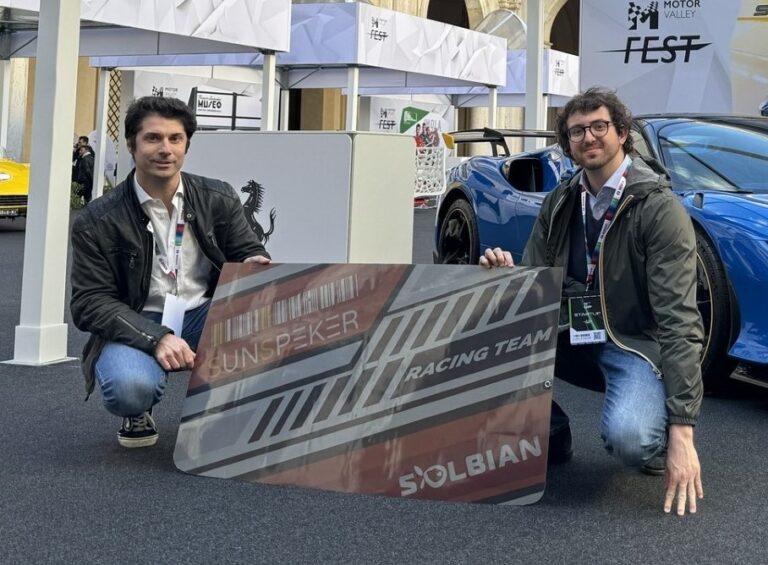The two Italian companies said their new modules use a fully recyclable sticker that can help improve aesthetics and turn the panels into billboards. The panels use 24% efficient interdigitated back-contact solar cells from Maxeon.
Italian PV module manufacturer Solbian and Italy-based startup Sunspeker have developed new solar panels for vehicle-integrated solar photovoltaics (VIVP) applications.
The modules use customizable, fully recyclable stickerThat’s possible replicate high-resolution images while remaining permeable light. The images processed using Sunspeker’s proprietary process reportedly maintain a high degree of transparency. The adhesive film for the aesthetic covers is a thermoplastic material developed for outdoor applications.
“Our company can design custom panels that fit perfectly on complex, confined or curved surfaces, such as commercial vehicles of different types,” a Solbian spokesperson said. pv magazine. “The arrangement of the cells can also be adjusted, allowing space use to be optimized and energy generation to be maximized.
For the cutting process, Solbian uses high-precision machines that are said to ensure clean edges and perfect integration of the cells, without compromising their integrity or performance. “Thanks to the customization options, our panels can be discreetly integrated onto visible surfaces. This is especially useful in applications where aesthetics can also be crucial,” the spokesperson continues.
The standard SP 32 Sunspeker panels have a power of 89 W and a power conversion efficiency of 18%. Their no-load voltage is 23.0 V and short-circuit current is 4.7 A. They measure 1,109 mm x 546 mm x 2 mm and weigh 1.6 kg.
The panels can operate at a maximum system voltage of 1,000 V and operating temperatures from -40 C to 85 C. Each panel relies on 32 interdigitated back-contact (IBC) solar cells with an efficiency of 24%, supplied by the Singapore-based module manufacturer. Maxeon. The temperature coefficient is -0.28%/C.
“The cells are laminated to a base of flexible and lightweight polymer materials,” the spokesperson explains. Lamination is carried out through an encapsulation process that insulates and protects the cells from external influences such as moisture, corrosion and mechanical shock.
“This solar panels can be used on the above-ground parts of vehicles and mobility solutions, but also on other parts, such as the sides,” says Sunspeker That’s what CEO Fabrizio Chiara says. “The panels can retain approximately 80% of their original power, given the high transparency of the foil. There are no restrictions on the types of images and textures that can be created.
According to Chiara, the ability to brand the panels allows companies to promote their business and use the vehicles as a means of communication.
This content is copyrighted and may not be reused. If you would like to collaborate with us and reuse some of our content, please contact: editors@pv-magazine.com.


